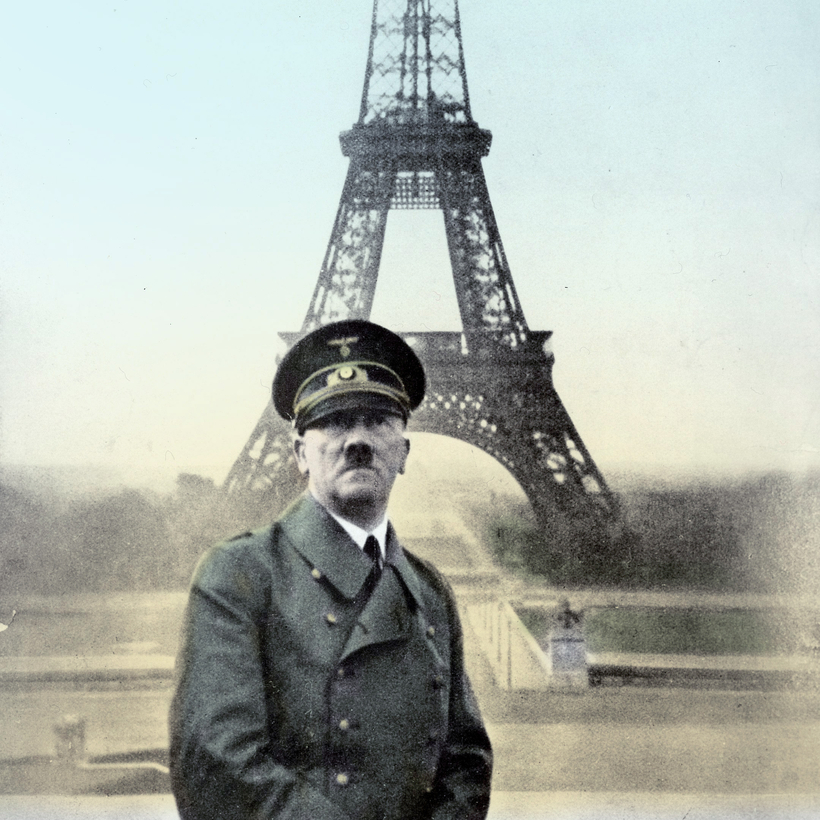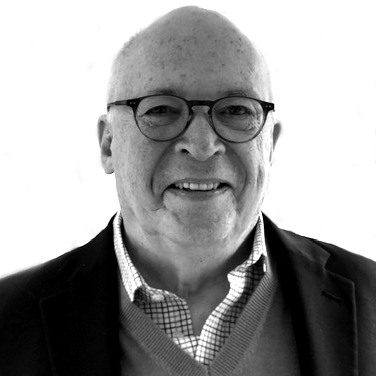In June 1940, while scouting for the army following him, a young German lieutenant rode a BMW motorbike toward Montmartre, using the brilliant dome of Sacré-Coeur as his beacon. He found the streets empty, but upon reaching the center of the neighborhood, he saw his first Parisians, and they their first German occupier. The soldier quickly sped away, but the abashed citizens now realized that Paris was no longer theirs alone.
After a lightning-speed defeat by the Germans in May-June 1940, France, and especially Paris, confronted what was quickly named la peste brune (the brown plague, referring to the color of German uniforms), an epithet derived from la peste noire (the Black Plague, nestled in collective memory). Plagues—real and metaphorical—cross all lines, reduce to meaningless all worldly categories, confound the intelligent with the stupid, produce what the French economist Thomas Piketty identifies as the “violence of inequality.” Victims of plagues are confounded by the options offered them. They have to relearn, if not reimagine, what had been essentially automatic behavior. Soon, a smothering bureaucracy, devised by both the Germans and their fellow travelers, the right-wing French government in Vichy, would upend life in the city that had stood through centuries for liberty and tolerance.
One of the most intriguing aspects of what would be a 1,500-day conflict between the occupier and the occupied of Paris was not the military engagement but the manner in which daily life—social codes, family relations, public and private alliances—had to be altered for those who endured it. Suddenly, one’s sense of space, both intimate and public, had to be reconfigured. The familiar was frequently forbidden. Citizens were put under curfew, and to leave home was to take a nervous chance. Strangers became even more so; the question of whom to trust activated part of the lizard brain long dormant.
Paris confronted what was quickly named la peste brune (the brown plague, referring to the color of German uniforms), an epithet derived from la peste noire (the Black Plague).
Living in this manner quickly became boring, as time seemed both to drag on and race ahead. Simone de Beauvoir wrote in her diary that she lived her life “simultaneously in the infinite and in the moment. I had to fill the time minute by minute … but entirely without a tomorrow.” Boredom rejects the imagination, closing off one of the best remedies for those secluded and separated from others. It becomes more persistent when a person’s living space has been reduced. Parisian apartments became smaller during the winter as the cold could not be kept out and rooms were closed off. Cabin fever, imposed by inconsistent police manipulation of curfews and other restrictions, grew month by month. Unable to leave freely one’s immediate environment often meant that intra-familial relations became more difficult, and intensely intimate.

Families disagreed about what constituted safe and unsafe behaviors. The presence of children during the lockdown brought a novel set of worries. Could they follow the rules of the new epoch? Could they be trusted to keep secrets? How do you explain the nearer presence of death to them, as posters appeared ever more frequently announcing the execution of “terrorists”? What are they learning in school? Are their teachers to be trusted? Adolescents, sensing as ever their new physical and psychological freedoms, presented an even more nerve-racking challenge. How provocative would they be? Any resistance against the occupier could put a family in danger. For youngsters, the concept of social distancing, of staying close to home, was especially hard to grasp, and for their parents yet another recurring concern. How susceptible were they to rumor? Did they join clandestine groups, or did they act out their grievances and fears with their peers? Rule-breaking was no longer the expected prerogative of the newly adult but a threat to the community at large. The role of parent became as much one of surveillance as of rearing.
Secrecy, and its agent gossip, changed the purposes of social conversation. Rumor increasingly assumed the veneer of fact. Suspicion of the “other”—those not from the neighborhood, the city, or the nation—grew as denizens attempted to parse the occupier’s wishes. Scapegoats were actively sought and, in some cases, invented. Ethnic characteristics that had been assimilated over time quickly took on more sinister meanings. Being a Jew, or a black, or an Armenian, or an Arab suddenly became more important than being a co-worker, or neighbor, or client.
What had been a routine of finding satisfying food for dinner turned into a persistent, and often frustrating, search for unpredictably available nutrition. Some citizens appeared to have an easier task providing for their families; others were reminded by long lines and innumerable closed signs that their searches would be interminable. The presence of visible wealth underscored the poverty of countless others and became too obvious to ignore or explain away.
Moving around under the eyes of the Germans produced anxiety. Formerly routine activities now demanded conscious preparation. In large French cities, the anonymity of mass transport was replaced by an uneasy awareness of others. Attitudes and behaviors were closely watched. Should the vigilant authorities not notice your discomfort, others would. The social trust that had served as a normal emollient faded. What one wore, how one walked, how one spoke—all mattered anew as occupied citizens attempted to establish their own forms of social distancing, protecting their secrets and their own lives. Should one cross the city or leave it to visit relatives or close friends? What if one were arrested, or “locked down” in an unfamiliar environment? Would forgetting one’s ID papers upturn a family’s carefully constructed patterns of safety? In casual interactions, it became easier to offend neighbors as well as strangers, and thus awareness of one’s surroundings reached new levels of acuity.
The presence of visible wealth underscored the poverty of countless others and became too obvious to ignore or explain away.
The streets were silent, and disconcertingly empty. The sounds of urban life, especially of buses and automobiles, disappeared, and an aura of unfamiliarity added to the sense of isolation felt by all, even the most sophisticated citizen. Bicycles were everywhere and as necessary as a good pair of shoes. The shoes themselves were often cobbled in wood, because of the paucity of leather. Ears became accustomed to the rapid sound of women’s heels on the sidewalks, competing with the sounds of horses’ hooves, newly returned to motorless boulevards. The occupation of Paris and France had left the built environment in place. The Germans had not bombed or shelled the “open city.” Yet, this phenomenon—of an apparently intact physical place, unchanged from “before”—enhanced the sense of disassociation. Everything appeared the same, but it wasn’t. All senses were awakened from habit, and mental fatigue increased.

Some waited out the “brown plague” by lowering their heads and keeping their eyes on the nearest task. Some found ways to make conditions worse, materially and morally—through collaboration or corruption. A number took up arms. Others resisted with acts of decency and tolerance toward those in equally or more straitened circumstances. Most civil rejection of the occupation comprised deeds that expressed some version of a collective ethical or individual moral certainty: in the end, human goodwill and ingenuity would prevail against human evil. Gestures could be small, such as smiling at or shaking hands with a Jew wearing the imposed yellow star, or significant, like quickly opening doors to those running from the authorities. The despised were hidden in cellars, or rooms in the attic, or in garden sheds; men and women led others to safety across borders; the more courageous protected endangered children. The will to faire quelque chose—to do something—was a compelling motivation. Writers and artists resisted with illustrations, poetry, stories, songs, and underground newspapers in which hopeful information was frankly offered. Glances, brief encounters, gestures—all served to express what was vocally forbidden.
The despised were hidden in cellars, or rooms in the attic, or in garden sheds.
As the occupation persisted, emotional reactions became more visible. Anger from or caused by the occupier could erupt easily into bodily harm and worse. Quarrels among citizens slid easily into physical confrontations. Forces of order and those willing to collaborate with them threatened, attacked, or murdered. Like road rage, it took only a spark to light an explosion incommensurate with the implied threat.
When will it end? This question inflected everyone’s social, political, and psychological actions. Indeed, will it end? And what will our lives be like when the “plague” has weakened or disappeared? Exquisite attention was placed on every datum as citizens read the lines, and between them, to discover how the plague was being challenged. Who is winning the struggle between the affected and their fateful enemy? In fact, what would “winning” look like?
The physical and the psychological, the mundane and the exceptional, the lived and the imagined—all the forms and functions that define living together were re-examined in occupied Paris. Rarely can any society be prepared for such a sudden catastrophe, even with some warning. Our first solace is to look to “leaders”—politicians, scientists, clergy, artists, family members—for comfort, yet often we find them equally bewildered by events. To act positively in such times demands imagination and perseverance, necessary tools of resilience. In the end, we must model our behavior on those who choose the path of paying generous and worthy attention to their fellow sufferers, a way that can lead all of us to a healthier redemption.
The occupation of France did end, and French society did begin to redefine itself. (For instance, women won the right to vote in 1944.) A paroxysm of bloody debt-settling and revenge lasted about two years, but palliative memory eventually shaded resentfulness, and the nation’s social economy forged ahead to decades of dazzling recovery. A new normalcy prevailed, though not without missteps and mistakes (France’s colonial wars in Vietnam and Algeria). And again, Paris became the City of Light for an exhausted world. Not all its citizens had been ethically admirable, and the scars of this civil antagonism remain. Yet many French had, in major and minor ways, represented Albert Camus’s elemental vision in his novel The Plague, when his narrator, a medical doctor, insists that “the only means of fighting a plague is—common decency.” To resist the despair that comes from a smothering occupation, by human enemies or an invisible plague, is, when joined to a sense of solidarity, to do one’s best to maintain the virtues of the commonwealth.
Ronald C. Rosbottom, a professor at Amherst College, is the author of When Paris Went Dark and Sudden Courage


